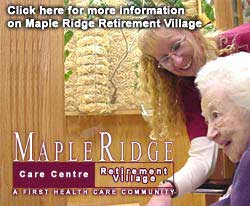|
A
lottery Tuesday morning determined the position on the ballot of
three of the Republican candidates, Mesner, Ritter and Fults, who
all appeared at City Hall at 9 a.m. Mon., Dec. 11, the first
opportunity to file their petitions. Other candidates are listed in
the order that they filed.

Ritter,
who defeated John Guzzardo in the 1997 election to win her first
mayoral term, has been involved in city government since 1981, when
she won her first term as alderman. She served as alderman from Ward
5 when the city had seven wards, and after the redistricting served
as Ward 1 alderman until 1997.
Fults,
a math teacher at Lincoln Community High School, served as alderman
from Ward 3 in the late 1980s. Mesner is presently completing his
second term as alderman from Ward 2.

Davis,
presently a member of the Logan County Board, has also served on the
Logan County Health Department board and on the board of the Lincoln
Optimist Club.
[to top of second column in
this article]
|

Although
there will be a battle for the mayor’s position, the city clerk,
city treasurer and five alderman will run unchallenged in the
primary election.
Running
unopposed for city clerk, Juanita Josserand has served in that
position since 1987, when she was appointed to fill the unexpired
term of state Sen. Robert Madigan. Lester D. Plotner, city
treasurer, will run unopposed for his second full term. He has
served for six years, also serving two years of an unexpired term.
Three
incumbent aldermen are running, also unopposed: Benny L. Huskins Sr.
will run for his third term in Ward 1; Glenn Shelton, who was
appointed to fill the unexpired term of Verl A. Prather, will run
for his first full term in Ward 4; and Michael T. Montcalm will run
for his fourth term as Ward 5 alderman.
Verl
Prather is running for the Ward 2 seat being vacated by mayoral
candidate Mesner. Prather was formerly alderman in Ward 4 but moved
to Ward 2.
Newcomer David R. Armbrust
is running for the Ward 3 seat being vacated by former circuit judge
Gerald Dehner, who has chosen not to run.
[Joan
Crabb]
|
|
Ho
Ho Dough giveaway postponed
[DEC.
18, 2000] The
annual Ho Ho Dough holiday cash giveaway scheduled for 5 p.m. on
Sunday was postponed due to the extreme weather
conditions. With the National Weather
Service confirming life-threatening wind chill factors of
nearly 20 degrees below zero, officials with the Lincoln/Logan
County Chamber of Commerce and Main Street Lincoln determined to
postpone the event to Wednesday, Dec. 20, at 6 p.m. Bobbi
Abbott, executive director of the chamber, and Wendy Bell, Main
Street Lincoln program manager, both felt it would be
irresponsible to bring people out in the extreme conditions.
They noted the wide range of ages attending include babies and
the elderly, whom the weather would be particularly hard on.
As
it was, both Abbott, Bell and their families stood in the cold and
personally turned away the die-hards who didn't get the word on
Media One, at the Lincoln Area Music Society concert or via the
grapevine. Lincoln City Police assisted with
the effort. No one was more disappointed than the
officials that the money wouldn't be given away that evening and
most were joyous that they wouldn't be standing in the sub-zero
temperatures to claim the prize.
The
forecast for Wednesday is the warmest all week, with highs expected
in the 20s and only light snow late in the evening. The time
has been pushed back to 6 p.m. to give as many people as possible
the chance to get downtown after work. Officials note that it
will be dark at that time and everyone should bring a flashlight to
read their ticket numbers. Also, people are encouraged to dress
warmly.
|
|
Illinois'
heritage tourism program has been a national model since the first
seven projects were designated in 1998. With the naming of these
four new projects, Illinois has a total of 11 heritage areas that
are being targeted for development.

"Illinoisans
can take pride in our state's history and heritage, and the Heritage
Tourism Program provides Illinois with new opportunities to share
our past with visitors," Gov. Ryan said. "I'm particularly
pleased that the development of the first African-American heritage
area in Illinois is moving forward. Retracing the Underground
Railroad has tremendous potential to bring new economic development
to minority communities while ensuring that the history of
African-Americans in Illinois will be remembered by future
generations."

The
Department of Commerce and Community Affairs' (DCCA) Bureau of
Tourism developed the Heritage Tourism Program to boost
cultural/historical tourism throughout Illinois. Selected projects
qualify for six years of administrative support, grants to provide
technical assistance and priority funding from the Tourism
Attraction Development Grant Program.
"Research
shows that heritage travelers spend more per trip, take longer
trips, visit more attractions and stay overnight more often than the
typical leisure traveler. The Heritage Tourism Program enhances our
ability to capitalize on the economic impact these travelers have on
the communities they visit," said DCCA Director Pam McDonough.

"Many
of our heritage projects take in rural areas that have great
potential for tourism but need help in creating a well-rounded
visitor experience. The heritage program nurtures these projects,
with a goal of helping them to become self-sustaining new
attractions for visitors," added Cathy Ritter, DCCA's deputy
director, Bureau of Tourism.
The
original seven heritage projects are "Looking for
Lincoln," "Trace of the Ages: The Mississippi River,"
"I&M Canal: The Waters that Built America," "A
Tapestry of Time: The Illinois River," "Ohio River Route:
Where Illinois Began," "Crossroads Region" (in
southeastern Illinois), and "Immigrants and Ingenuity" (in
northwestern Illinois).

The
four newest Heritage Tourism projects are Freedom Trails, Illinois
Route 66, and two projects recently designated as National Scenic
Byways: the National Road and the Lincoln Highway.
A
further description of each new project follows:
Freedom Trails, Legacies of Hope
Counties
included: Adams, Pike, Morgan, Scott, Greene, Macoupin, Jersey.
Madison, Fayette, St. Clair, Clinton, Washington, Randolph, Perry,
Jackson and Alexander
In
Illinois, there seem to be roughly six major definable routes of the
Underground Railroad, with five of these routes converging into
Chicago. Phase I of this proposal begins from the south and east,
with Phases II and III picking up the remaining counties that will
take the trail into Chicago and beyond. This phase encompasses 16
counties, with the intent to partner with public, private and
governmental entities to amass funding to create exhibits,
publications and conduct research. Many benefits are expected in the
areas of community, economic and tourism development as well as
renewed pride in African-American communities. This project proposes
to link the trails in a systematic order, along with
African-American experiences stemming from the lifestyles, places
and characters relevant to the areas.
[to top of second column in
this article]
|

Illinois Route 66
Counties
included: Cook, DuPage, Will, Grundy, Livingston, McLean, Logan,
Sangamon, Macoupin, Montgomery, Madison and St. Clair
This
project will encompass a 12-county area stretching from Chicago in
the north all the way to Madison and St. Clair counties in the
south. It will be designed to further develop Route 66 as a viable
tourism destination in Illinois by linking many of the communities
along the route through infrastructure improvement and enhancement,
development of maps and guides, audio tours, special events and
exhibits, establishment of an Illinois Route 66 brand identity, and
implementation of a cooperative strategic marketing program. As
product development continues over time, the program will be
expanded to include more communities within the state, and by
cultivating partnerships across state borders, Route 66 has the
potential to become a national heritage tourism destination and also
has great international appeal.

Lincoln Highway Scenic Byway
Counties
included: Cook, Will, Kendall, Kane, DeKalb, Ogle, Lee and Whiteside
The
Lincoln Highway, as the nation's first transcontinental paved
roadway, connected rural farming communities with industrialized
cities as it crossed through 13 states. Referred to throughout
history as the "Main Street of America," the original
purpose for building the Lincoln Highway was to connect the
communities, families and businesses located along its length by
means of a paved surface. The 179-mile segment of the Lincoln
Highway in Illinois is a journey from east to west, taking visitors
from the industrialized southern suburbs of Chicago through a rural
suburban region toward Joliet. The Lincoln Highway, which was
designated a National Scenic Byway in June 2000, possesses the
historic and cultural intrinsic qualities to be recognized as a true
tourism destination.

National Road of Illinois
Counties included: Clark, Cumberland,
Effingham, Fayette, Bond, Madison and St. Clair
The National Road of Illinois, which was
designated a National Scenic Byway in June 2000, runs 165 miles from
the Indiana border near the Wabash River to the grounds of the
Jefferson National Expansion Memorial in St. Louis. The association
has completed a corridor management plan and will be identifying
ways to provide interpretation at various sites along the road. They
will also be promoting the assets of the National Road through
history found in scenic and natural areas, historic architecture,
folk life resources, commercial and industrial heritage, and
recreational activities.
[DCCA
news release]


|
|
Each prospective
volunteer interpreter will receive his or her own training manual.
The training manual will contain historical background information,
daily operating procedures and an outline on giving tours.

Several training
sessions are scheduled prior to March 1. Each training session
will last 1 to 1˝ hours. Daily operating procedures and guidance
on giving a tour will be presented. Time for each training session
to start is 1 p.m. Dates are Wednesday, Jan. 17; Thursday, Jan. 25;
and Thursday, Feb. 15.
The site manager,
Richard Schachtsiek, will solely handle the training and supervision
of volunteer interpreters. You may contact him by calling the
courthouse at (217) 732-8930. In the beginning, scheduling will be
handled by Shirley Bartelmay. You may contact her by calling (217)
735-4977.

[to
top of second column in this article]
|
This is an
appropriate time to start a volunteer interpretive program. Both the
Illinois Historic Preservation Agency and our own Abraham Lincoln
Tourism Bureau of Logan County actively promote the courthouse.
Through the Logan County Tourism Bureau the courthouse is also an
active participant in the "Looking for Lincoln" program.
This program is to encourage visitors to visit not only the main
attractions but the smaller ones as well. This will give the
courthouse an opportunity to benefit from being promoted with the
bigger sites.

The courthouse will
also benefit in a few years when the new Lincoln Presidential
Library opens. One purpose of the new library is to encourage
visitors to leave Springfield and visit the many locations,
including Postville Courthouse, they learned about in the library.
The next few years
are a time for growth for Postville Courthouse. Expanding operating
hours using volunteer interpreters can only do this. If enough
volunteers join, each one should only have to give one afternoon per
month. Please consider being a Postville Courthouse volunteer
interpreter. We would be very glad to have you join us.

[click
here for related article about the reopening of the Postville
Courthouse]
|

